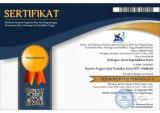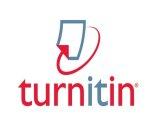Development of Interactive Multimedia on Chemical Bonding Material
DOI:
https://doi.org/10.33394/hjkk.v13i5.18039Abstract
The limited availability of learning media capable of facilitating students’ understanding of abstract concepts in chemical bonding prompted this research. This study aims to determine the validity level of the developed interactive multimedia and to assess teachers’ and students’ responses toward its use. The research employed a Research and Development (R&D) method using a modified ADDIE model, limited to the development stage. The trial subjects consisted of two chemistry teachers and 9 students for the small-scale test, as well as 30 students from grade XI at SMAN 2 Sekadau for the large-scale test.The validation results from experts indicated that the interactive multimedia was highly valid with an average percentage of 94.17%, consisting of 88.33% for the media aspect, 96.25% for the material and language aspects, and 97.92% for the assessment aspect. Student responses reached an average of 90.69% in the small-scale test and 94.53% in the large-scale test, while teacher responses reached 83.07%.The novelty of this research lies in the use of interactive multimedia equipped with a variety of engaging features, such as ice-breaking activities and educational games, which are rarely implemented in chemical bonding learning at the senior high school level. Therefore, the developed interactive multimedia can be used as a learning medium and further tested for its effectiveness.
Published
How to Cite
Issue
Section
Citation Check
License
License and Publishing Agreement
In submitting the manuscript to the journal, the authors certify that:
- They are authorized by their co-authors to enter into these arrangements.
- The work described has not been formally published before, except in the form of an abstract or as part of a published lecture, review, thesis, or overlay journal.
- That it is not under consideration for publication elsewhere,
- That its publication has been approved by all the author(s) and by the responsible authorities – tacitly or explicitly – of the institutes where the work has been carried out.
- They secure the right to reproduce any material that has already been published or copyrighted elsewhere.
- They agree to the following license and publishing agreement.
Copyright
Authors who publish with Hydrogen: Jurnal Kependidikan Kimia agree to the following terms:
- Authors retain copyright and grant the journal right of first publication with the work simultaneously licensed under a Creative Commons Attribution License (CC BY-SA 4.0) that allows others to share the work with an acknowledgment of the work's authorship and initial publication in this journal.Â
- Authors are able to enter into separate, additional contractual arrangements for the non-exclusive distribution of the journal's published version of the work (e.g., post it to an institutional repository or publish it in a book), with an acknowledgment of its initial publication in this journal.
- Authors are permitted and encouraged to post their work online (e.g., in institutional repositories or on their website) prior to and during the submission process, as it can lead to productive exchanges, as well as earlier and greater citation of published work.
Licensing for Data Publication
Hydrogen: Jurnal Kependidikan Kimia uses a variety of waivers and licenses, that are specifically designed for and appropriate for the treatment of data: Open Data Commons Attribution License, http://www.opendatacommons.org/licenses/by/1.0/ (default) Other data publishing licenses may be allowed as exceptions (subject to approval by the editor on a case-by-case basis) and should be justified with a written statement from the author, which will be published with the article.








